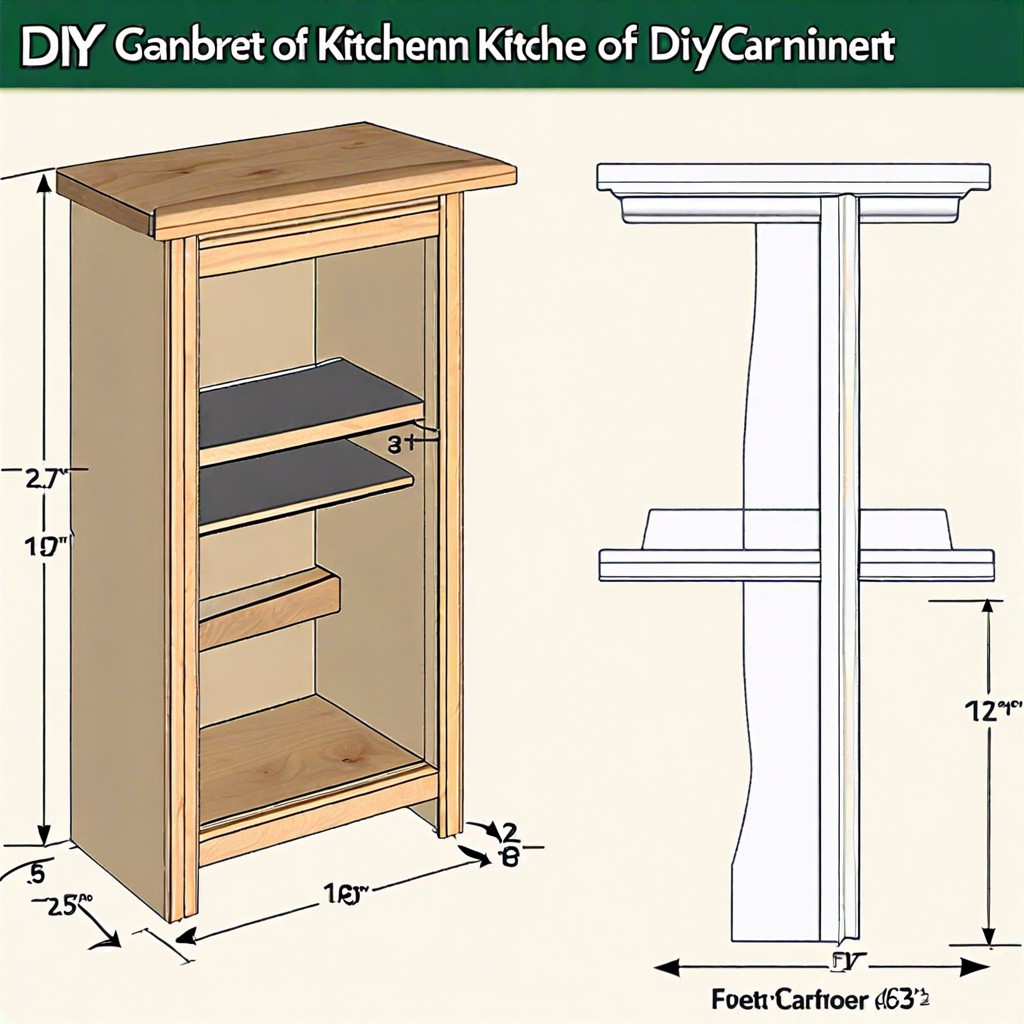Last updated on
Understanding the scale of sixty inches becomes essential because it lays the groundwork for successful conversions to other measurements.
Key takeaways:
- Visualize 60 inches: 2/3 of a kitchen countertop, longer than a drywall sheet.
- Common household items at 60 inches: sofa, countertop, doorway height.
- 60 inches in space usage: two kitchen countertops, a queen-sized bed.
- Sporting equipment at 60 inches: archery bow, basketball key, fishing rod.
- How to calculate TV screen size: measure diagonally, not including bezel.
What's Inside
Understanding 60 Inches in Common Objects

Visualize a standard kitchen countertop, which typically stands at about 36 inches high; 60 inches would be akin to stacking another two-thirds of that counter on top.
For those who frequent home improvement stores, drywall sheets often come in 48-inch widths, so a 60-inch measurement would extend beyond that by a full foot.
When examining lengths around the house, consider the width of a queen-size bed—exactly 60 inches. This width is a familiar reference point for many, offering a tangible grasp of the measurement in a daily context.
Common Household Items Measured At 60 Inches

Visualizing the size of 60 inches is made easier by considering items many people are familiar with:
- The average sofa’s length spans around 84 inches, so 60 inches would be just over two-thirds of that size.
- A standard kitchen countertop height is 36 inches; laying one and a half countertops on their sides end-to-end equals 60 inches.
- Most doorways in homes are 80 inches tall, meaning 60 inches is three-quarters of that height.
- Thinking vertically, a five-foot tall person exactly matches 60 inches.
- Twin-sized bed mattresses are typically 75 inches long, so 60 inches is 5 inches shorter than their width.
By relating to these everyday objects, it’s easy to get a good sense of just how big 60 inches is within a typical environment.
Visualizing 60 Inches in Space Usage
When allocating space within a room for furniture or decor, a 60-inch measurement can serve as a useful benchmark:
- Picture two average kitchen countertops side by side—this roughly equals 60 inches.
- This is approximately the width of a queen-sized bed.
- If you have a 5-foot-wide walk-in closet, that’s the distance from wall to wall.
- In terms of shelving or cabinets, a 60-inch span can typically store the same as three standard 20-inch carry-on luggage side by side.
- For those who enjoy DIY projects, a standard sheet of plywood is often 48 inches wide, so imagine adding an extra foot to gauge how much space you’d need.
- Thinking vertically, 60 inches is a common recommended mounting height for a flat-screen TV’s center from the floor, ensuring optimal viewing.
Utilizing these analogies allows for practical spatial planning and can help in visualizing the length before committing to alterations or purchases.
Comparison to Human Height
Considering the average height of adults can help contextualize 60 inches.
For many, this measurement will be familiar territory—indicative of human stature.
The average American woman, standing approximately 63.7 inches tall, surpasses this mark by just over three inches.
Meanwhile, the average man, at around 69.3 inches, towers further above this threshold.
Children, on their growth journey, may find 60 inches as a milestone—often reached during those varied paced pre-teen years.
This benchmark also often aligns with the top of a traditional doorway’s handle, lending a tangible reference point within the home environment.
Keep in mind, personal height experience can vastly differ, thus 60 inches may feel differently depending on individual perspectives.
Inches in Sporting Equipment
In the realm of sports, the 60-inch measurement comes up in various equipment specifications. The standard archery bow, for example, often ranges from 60 to 70 inches, with 60 inches being suitable for those of average height and arm span.
In basketball, the width of the key, also known as the paint, is just under 60 inches, giving you a perspective of the space players have to maneuver during a game.
For the fishing enthusiasts, many medium-sized fishing rods come in around 5 feet or precisely 60 inches, providing a balance between casting distance and control.
Lastly, think of ski poles – for someone approximately 5 feet tall, a 60-inch ski pole is the recommended length to ensure proper posture and balance on the slopes.
Recognizing these applications gives a tangible sense of scale for 60 inches in the context of sporting goods.
How to Calculate the Screen Size of a TV
To calculate the screen size of a TV, you’ll need to measure diagonally from one corner to the opposite corner. This doesn’t include the bezel, or frame, around the screen; focus only on the area that displays the image. This diagonal measurement in inches is what’s advertised as the TV’s size.
For example, if you measure from the bottom left corner of the screen to the top right corner and it measures exactly 60 inches, then you have a 60-inch TV.
Remember, this measurement is only for the screen and doesn’t account for the extra space the bezel and stand might add. Keep in mind, the width, and height of the TV will be smaller than the diagonal measurement due to the rectangular shape of the screens. For a precise fit in your space, measure these additional dimensions too.
If math is more your style, you can use the aspect ratio (commonly 16:9 for modern TVs) to calculate approximate width and height. However, for a quick reference, use the diagonal measurement for the size.
What Are 60-Inch TV Dimensions
When considering a 60-inch TV, the dimensions actually refer to the diagonal measurement of the screen and not the width or height. Therefore, the actual width and height will vary based on the aspect ratio, which is predominantly 16:9 for modern televisions.
On average, a 60-inch TV will have a width of about 52.3 inches (132.8 cm) and a height of roughly 29.4 inches (74.7 cm) without the stand.
The depth of the TV is typically around 2-3 inches (5-7.6 cm), though this can vary with different models and the inclusion of a stand adds to the overall depth.
Remember, the bezel or frame surrounding the screen is not included in these measurements and can add extra length and width to your TV, so it’s essential to consider the entire TV dimensions when planning your space.
How Far Should You Sit From a 60-inch TV
Finding the optimal viewing distance enhances your TV-watching experience. For a 60-inch screen, experts, including those from the Society of Motion Picture and Television Engineers (SMPTE), recommend sitting at a distance that is approximately 1.5 to 2.5 times the screen’s diagonal. In this case, that translates to a range of 7.5 feet to 12.5 feet. This allows for a full-field view without causing eye strain, and ensuring you can appreciate the TV’s resolution without pixelation.
Additionally, maintaining this distance helps in creating an immersive experience, akin to that of a movie theater, right in your living room. Consider the layout of your space and furniture arrangement to achieve the ideal setup for your viewing pleasure.
FAQ
Is 60 inches 5 feet?
Indeed, 60 inches is equivalent to 5 feet.
Is 60 inches bigger than 4 feet?
Yes, 60 inches is indeed larger than 4 feet.
How tall is 60 inches in human height?
60 inches equates to five feet in human height.
What is 60 equivalent to in inches?
60 centimeters is equivalent to 23.62 inches.
How many yards is 60 inches equivalent to?
60 inches is equivalent to 1.67 yards.
What common objects measure about 60 inches in length?
A typical loveseat sofa measures around 60 inches in length.
How does 60 inches fare in comparison to the average adult height in the United States?
At 60 inches (5 feet), you would be considered shorter than the average adult height in the United States: 70 inches (5.83 feet) for males and 64 inches (5.33 feet) for females.




